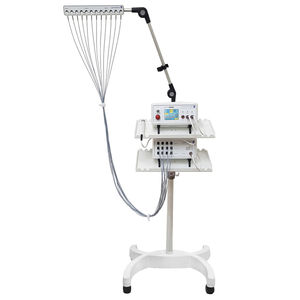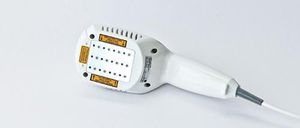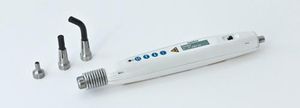
- Rehabilitation
- Kinesitherapy, Physiotherapy
- Acupuncture laser
- RJ-LASER - Reimers & Janssen
- Company
- Products
- Catalogs
- News & Trends
- Exhibitions
Physical biostimulation laser PHYSIOLASER OLYMPIC acupuncturediodetabletop

Add to favorites
Compare this product
Characteristics
- Applications
- physical biostimulation, acupuncture
- Amplifying medium
- diode
- Ergonomics
- tabletop
- Pulse duration
- millisecond, nanosecond
- Wavelength
Max.: 904 nm
Min.: 638 nm
- Average power
Max.: 300 W
Min.: 0.5 W
Description
The Physiolaser is a modular expert laser for photobiomodulation, LLLT. It has two channels that can be used parallel (point and cluster probe)
Cluster probes, cw and super pulsed
Various laser probes for point and area therapy can be connected, with power up to 500 mW or super pulsed with 90 W single probe or 5x60W cluster probe. It is unsurpassed worldwide in its range of functions. It is easy to operate and universally applicable via the touch screen.
Physiolaser olympic, freely programmable for any application, easy probe exchange "plug and play". In addition to therapy with point and cluster probes, the Physiolaser also enables laser therapy via light guides with the LightNeedle (laser needle therapy). The Physiolaser is made for for orthopaedics, sports medicine, physiotherapy, veterinary medicine.
The super pulsed laser probes for deepest penetration
Various point and cluster probes are available for precise laser.
Single probes (one-handed operation) with point attachment, for precise and point-exact irradiation, with convex lens primarily for irradiation of the musculature, enables intensive treatment with simultaneous massage effect, secondarily for treatment of trigger points. Our super pulsed single and cluster probes are unique and offer deepest penetration.
5x60W/904 nm cluster probe, RJ therapy programs
The superpulsed probes (cluster probe 5x60W/904 nm, pulse width 200 nsec., 90 W single-probe) find a wide range of applications, especially with the special therapy programs for physiotherapy, sports medicine, orthopaedics, veterinary medicine.
VIDEO
Catalogs
Laser Therapy
24 Pages
Other RJ-LASER - Reimers & Janssen products
Laser Devices
*Prices are pre-tax. They exclude delivery charges and customs duties and do not include additional charges for installation or activation options. Prices are indicative only and may vary by country, with changes to the cost of raw materials and exchange rates.






